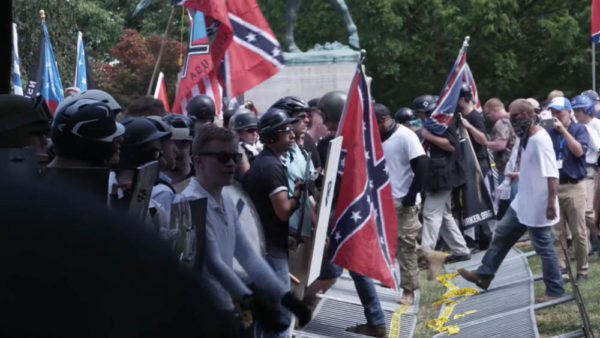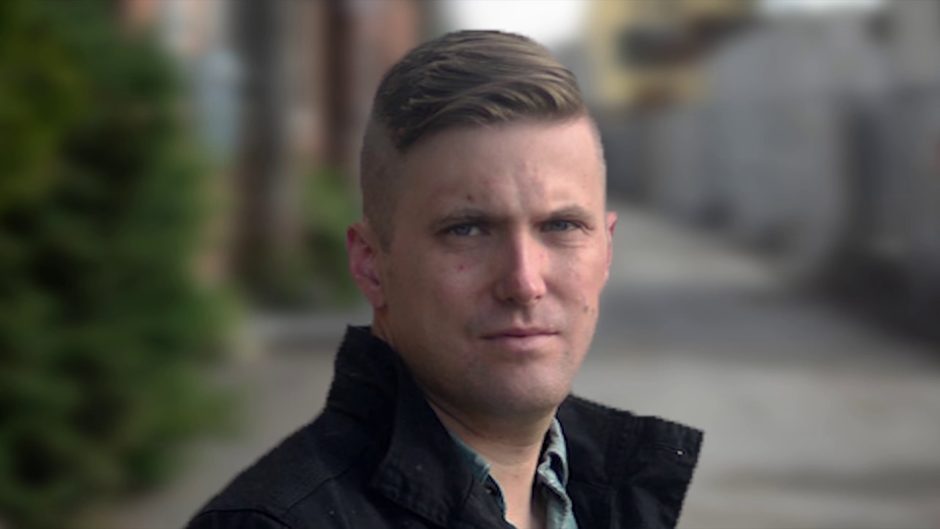As a fringe movement, the alt-right in the United States had its “15 minutes of fame” in August 2017, when it organized a Unite the Right rally in the quaint town of Charlottesville, Virginia, to protest the scheduled removal of a statue of Robert E. Lee, the commander of Confederate forces during the American Civil War.

As the events unfolded, white supremacists and anti-fascists clashed, racists marched in a torch-lit parade and shouted, “Jews will not replace us,” and an innocent bystander, Heather Heyer, was run over and killed by an alt-right sympathizer.
Adam Bhala Lough’s informative documentary, Alt-Right: Age of Rage, which is now available on the Netflix streaming network, is crafted around this rally. The central figures are Richard Spencer, the intellectual voice of the alt-right who coined this phrase; Daryle Lamont Jenkins, an African American antifa activist who monitors and exposes neo-Nazis, and Mark Potok, who keeps a close watch on American fascists for the Southern Poverty Law Center.
David Duke, the notorious antisemitic propagandist and former Ku Klux Klan grand wizard, and Jared Taylor, the publisher of the alt-right magazine American Renaissance, put in brief appearances.

Potok goes to the heart of the matter when he says that the alt-right is essentially a rebranded version of white supremacy. Profoundly ethnocentric and segregationist, its overarching aim is to create a white Christian ethno state in the United States. Spencer, comparing it to Israel, believes it can only materialize after a “post-revolutionary” upheaval in the country.
Potok, without elaborating, argues that Spencer’s solution is a “prescription for mass murder.”
Spencer, who heads an outfit called the National Policy Institute, comes across as a self-assured person who can be equally measured, crude and sarcastic.
Cruelly ripping into Jenkins, a corpulent man, Spencer alleges he consumes too many donuts. He dismisses Potok as “an obviously terrible human being” intent on “shutting down free speech.” He thinks the removal of Confederate statues is an injustice and an example of “white dispossession.” He calls Dylann Roof — the racist who murdered nine African Americans in a South Carolina church in June 2015 — a “sad case” but does not condemn him.


Contending that American society is rife with race hatred, Jenkins says his modus operandi is to be confrontational in exposing his enemies. “Violence has to be a form of defence,” he says. He claims that President Donald Trump has implicitly encouraged the alt-right.
Voicing an idea dear to the alt-right, Duke says, “We’re being ethnically cleansed in our own nation.”
Taylor, the godfather of the alt-right, argues that equality is “a dangerous myth” and proposes that the United States should be geographically divided into white and non-white entities.

The film climaxes with the Unite the Right rally in Charlottesville. Jenkins, pepper-sprayed by one of his racist opponents, expresses disappointment over Trump’s lukewarm reaction. Spencer, complaining he was attacked by police, condemns Heyer’s death but will not condemn the alt-right. He is pessimistic about his country’s future. “Maybe we can’t be a nation anymore,” he says in a moment of gloom.
Alt-Right: Age of Rage leaves a viewer with the feeling that the United States is a deeply fractured country.
